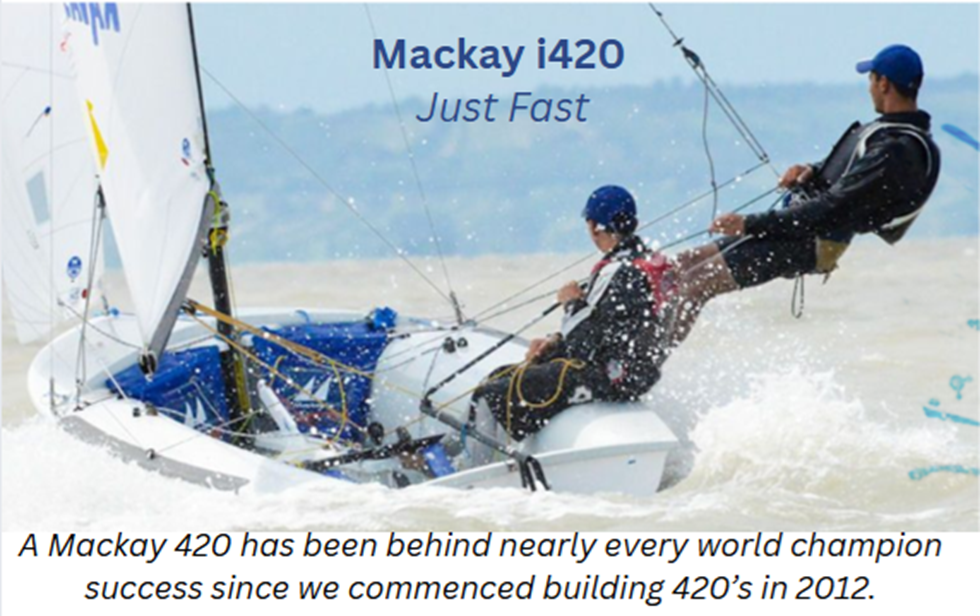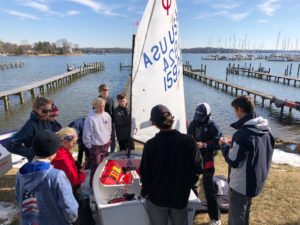
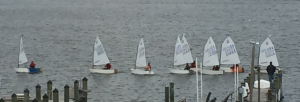
Saturday, we began the clinic with a lengthy dry-land rigging session with our Optimist stars. shared the secrets and rigging tips that made them so successful. On the water, we had a nice light/medium northerly and worked very hard on shifting gears in the Optimist. The box drill worked out really well, and we saw great improvement in sailors ability to shift gears, mark-to-mark, in the Optimist. Lunch de-briefs provided a great time to look at video and study sail trim and technique. We then had a mini-fleet race regatta of 5 races, and the competition was incredibly tight, with 7 of the 9 competitors finishing at least one race in the top 2!!! Wow!!
Sunday was windy and cold. After spending some time on heavy weather boat tuning, we headed out to do the triangle drill, stressing clear air, fleet position changes, and boat tuning. Sailors did an incredible job and showed marked improvement. We then went in for lunch and more video analysis from the mornings training session.
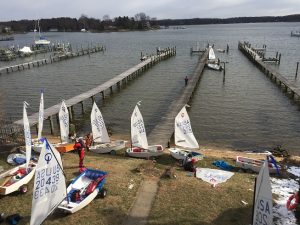
My general takeaways:
- Study. You need to understand the mechanics of the Optimist rig, how your sail was designed, how it should be rigged and trimmed. Once you do, then improvise and learn what works better for you. This is time consuming, but worth it. Build your own tuning guide!
- Prepare. For regattas, always spend time preparing your hull, rig, lines, and foils. Never enter a race with an unprepared boat. Fix items BEFORE they become a problem, and keep up with new rigging/spar/sail/foil trends.
- Sailing Observations:
- almost everyone needs to work on weight trim gear shifting. Too many times I saw sailors too far back in the boat, and not moving in wind strength changes
- tuning. LOTS of improvement here, especially during the square drill, but still more improvement needed. You need constantly to re-think your sails tune as the wind strength and course (upwind/downwind) changes.
- clear air. Too many times boats were content to sail in bad air; work hard to free your air up!
- Focus always. Make sure you finish the race, and the day, with the focus with which you started. This is often aided by having the correct sailing gear/clothing, the right nutrition and hydration.
- almost everyone needs to work on weight trim gear shifting. Too many times I saw sailors too far back in the boat, and not moving in wind strength changes
Saturday Tacking
Saturday Race Commentary
Saturday Race Commentary 2
Saturday Race Start
Box Drill #1
Box Drill #2
Box Drill #3
Sunday Upwind Practice
Sunday Triangle Drill
Sunday Stadium Team Race!
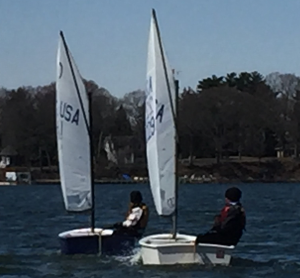
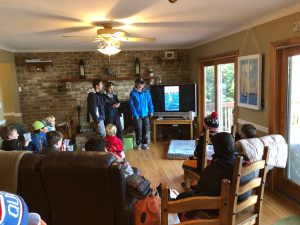
 Every morning I start my day off with a green smoothie. Some of you may be thinking, gross I don’t want to drink something green! However, despite the color, they taste great, and they provide your body with many health benefits! These health benefits help you to stay healthy and happy to boost your sailing performance and daily life. Green smoothies are fun and easy to make, and its a breakfast or snack you can take on the go. What are we waiting for, let’s learn all about the health benefits and how to make your green smoothie today!
Every morning I start my day off with a green smoothie. Some of you may be thinking, gross I don’t want to drink something green! However, despite the color, they taste great, and they provide your body with many health benefits! These health benefits help you to stay healthy and happy to boost your sailing performance and daily life. Green smoothies are fun and easy to make, and its a breakfast or snack you can take on the go. What are we waiting for, let’s learn all about the health benefits and how to make your green smoothie today!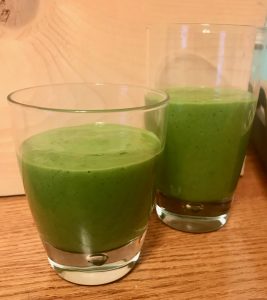


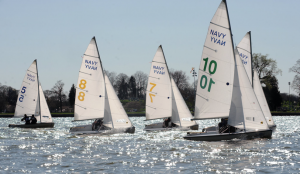 Photo taken from
Photo taken from 
 Photo by Rob Migliaccio
Photo by Rob Migliaccio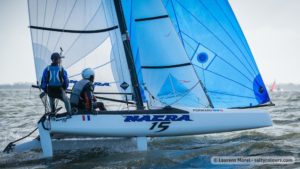 Looking for a youth boat built for speed and excitement? Maybe a pathway towards the Olympics? The Nacra 15 offers just that to youth sailors around the world. This semi-foiling catamaran is one of the six boats endorsed by the Olympic Development Program. The whole idea of the Nacra 15 is to capture youth sailors and have them continue sailing for life. This doublehanded boat requires teamwork and is making sailing fun and exciting for youth sailors all over the world.
Looking for a youth boat built for speed and excitement? Maybe a pathway towards the Olympics? The Nacra 15 offers just that to youth sailors around the world. This semi-foiling catamaran is one of the six boats endorsed by the Olympic Development Program. The whole idea of the Nacra 15 is to capture youth sailors and have them continue sailing for life. This doublehanded boat requires teamwork and is making sailing fun and exciting for youth sailors all over the world. Adult sailing instructors teach sailing to adults aboard our J24 sailboats in New York Harbor. There is a lot of boat traffic and fast currents. The stress is on student participation and student-focused learning. All of our sails are hands-on, and the typical student has zero sailing experience. Your interpersonal skills will be as valuable as your sailing skills.
Adult sailing instructors teach sailing to adults aboard our J24 sailboats in New York Harbor. There is a lot of boat traffic and fast currents. The stress is on student participation and student-focused learning. All of our sails are hands-on, and the typical student has zero sailing experience. Your interpersonal skills will be as valuable as your sailing skills.